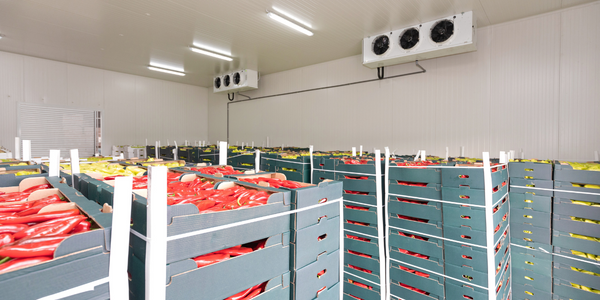Download PDF
Transforming the Australian Rail Industry’s Digital Ecosystem with IoT
Technology Category
- Analytics & Modeling - Predictive Analytics
- Application Infrastructure & Middleware - Data Exchange & Integration
Applicable Industries
- Railway & Metro
- Transportation
Applicable Functions
- Logistics & Transportation
- Maintenance
Use Cases
- Predictive Maintenance
- Transportation Simulation
Services
- Data Science Services
- System Integration
The Challenge
The Australia Rail Track Corporation (ARTC) is a crucial part of Australia’s supply chain, managing and monitoring goods transportation across 8,500km of rail network. The corporation collects vast amounts of data to ensure the timely delivery of cargo freight. However, ARTC was dealing with the complexity of siloed data across several segregated data sources, which posed inefficiencies and unnecessary complexity. This also impacted the cost of managing a network that is segregated across remote locations in Australia. The data sets were required by more than 150 applications generated from different data sources, meaning any change to the data needed to be altered in several systems. ARTC embarked on a business transformation strategy to digitally modernize and manage physical rail assets more efficiently, while building resilience to readily respond to customer demands, regulatory compliance, and varied world events.
About The Customer
The Australia Rail Track Corporation (ARTC) plays a vital role in Australia’s supply chain, managing and monitoring goods transportation across 8,500km of its rail network throughout Australia. ARTC collects vast amounts of data to monitor operations and ensure the timely delivery of cargo freight on its rail network. As part of its Digital Integration Strategy, ARTC endeavored to remove the complexity of its siloed data across several segregated data sources with a more modern, streamlined approach, in order to leverage data-driven insights and strategies — resulting in cost savings and increased efficiencies.
The Solution
ARTC implemented the first phase of its five-year digital strategy with the help of Databricks. They launched the Enterprise Integration Data Platform (EIDP) built on a cloud-based data lakehouse architecture on Microsoft Azure. This enabled the business to unify its approach to data management, advanced analytics, and ML-powered solutions. With the democratization of ARTC's data on a lakehouse architecture, data can now be extracted and decoupled easily, allowing immediate changes to be made securely from a single source of truth. Business intelligence tools such as Databricks SQL and Power BI have allowed ARTC's team to extrapolate insights easily in a self-service way, supporting decision making across ARTC's operations. ARTC's data engineers are now able to perform multiple functions in a secure and seamless way — across data ingestion, data preparation, and data analysis. They have built a data-driven ecosystem where ARTC's systems can communicate with each other seamlessly and implement groundbreaking design patterns with an event-driven architecture and high technical maturity.
Operational Impact
Quantitative Benefit
Related Case Studies.

Case Study
Airport SCADA Systems Improve Service Levels
Modern airports are one of the busiest environments on Earth and rely on process automation equipment to ensure service operators achieve their KPIs. Increasingly airport SCADA systems are being used to control all aspects of the operation and associated facilities. This is because unplanned system downtime can cost dearly, both in terms of reduced revenues and the associated loss of customer satisfaction due to inevitable travel inconvenience and disruption.

Case Study
IoT-based Fleet Intelligence Innovation
Speed to market is precious for DRVR, a rapidly growing start-up company. With a business model dependent on reliable mobile data, managers were spending their lives trying to negotiate data roaming deals with mobile network operators in different countries. And, even then, service quality was a constant concern.

Case Study
Digitize Railway with Deutsche Bahn
To reduce maintenance costs and delay-causing failures for Deutsche Bahn. They need manual measurements by a position measurement system based on custom-made MEMS sensor clusters, which allow autonomous and continuous monitoring with wireless data transmission and long battery. They were looking for data pre-processing solution in the sensor and machine learning algorithms in the cloud so as to detect critical wear.

Case Study
Cold Chain Transportation and Refrigerated Fleet Management System
1) Create a digital connected transportation solution to retrofit cold chain trailers with real-time tracking and controls. 2) Prevent multi-million dollar losses due to theft or spoilage. 3) Deliver a digital chain-of-custody solution for door to door load monitoring and security. 4) Provide a trusted multi-fleet solution in a single application with granular data and access controls.

Case Study
Vehicle Fleet Analytics
Organizations frequently implement a maintenance strategy for their fleets of vehicles using a combination of time and usage based maintenance schedules. While effective as a whole, time and usage based schedules do not take into account driving patterns, environmental factors, and sensors currently deployed within the vehicle measuring crank voltage, ignition voltage, and acceleration, all of which have a significant influence on the overall health of the vehicle.In a typical fleet, a large percentage of road calls are related to electrical failure, with battery failure being a common cause. Battery failures result in unmet service agreement levels and costly re-adjustment of scheduled to provide replacement vehicles. To reduce the impact of unplanned maintenance, the transportation logistics company was interested in a trial of C3 Vehicle Fleet Analytics.

Case Study
3M Gains Real-Time Insight with Cloud Solution
The company has a long track record of innovative technology solutions. For example, 3M helps its customers optimize parking operations by automating fee collection and other processes. To improve support for this rapidly expanding segment, 3M needed to automate its own data collection and reporting. The company had recently purchased the assets of parking, tolling, and automatic license plate reader businesses, and required better insight into these acquisitions. Chad Reed, Global Business Manager for 3M Parking Systems, says, “With thousands of installations across the world, we couldn’t keep track of our software and hardware deployments, which made it difficult to understand our market penetration.” 3M wanted a tracking application that sales staff could use to get real-time information about the type and location of 3M products in parking lots and garages. So that it could be used on-site with potential customers, the solution would have to provide access to data anytime, anywhere, and from an array of mobile devices. Jason Fox, Mobile Application Architect at 3M, upped the ante by volunteering to deliver the new app in one weekend. For Fox and his team, these requirements meant turning to the cloud instead of an on-premises datacenter. “My first thought was to go directly to the cloud because we needed to provide access not only to our salespeople, but to resellers who didn’t have access to our internal network,” says Fox. “The cloud just seemed like a logical choice.”





